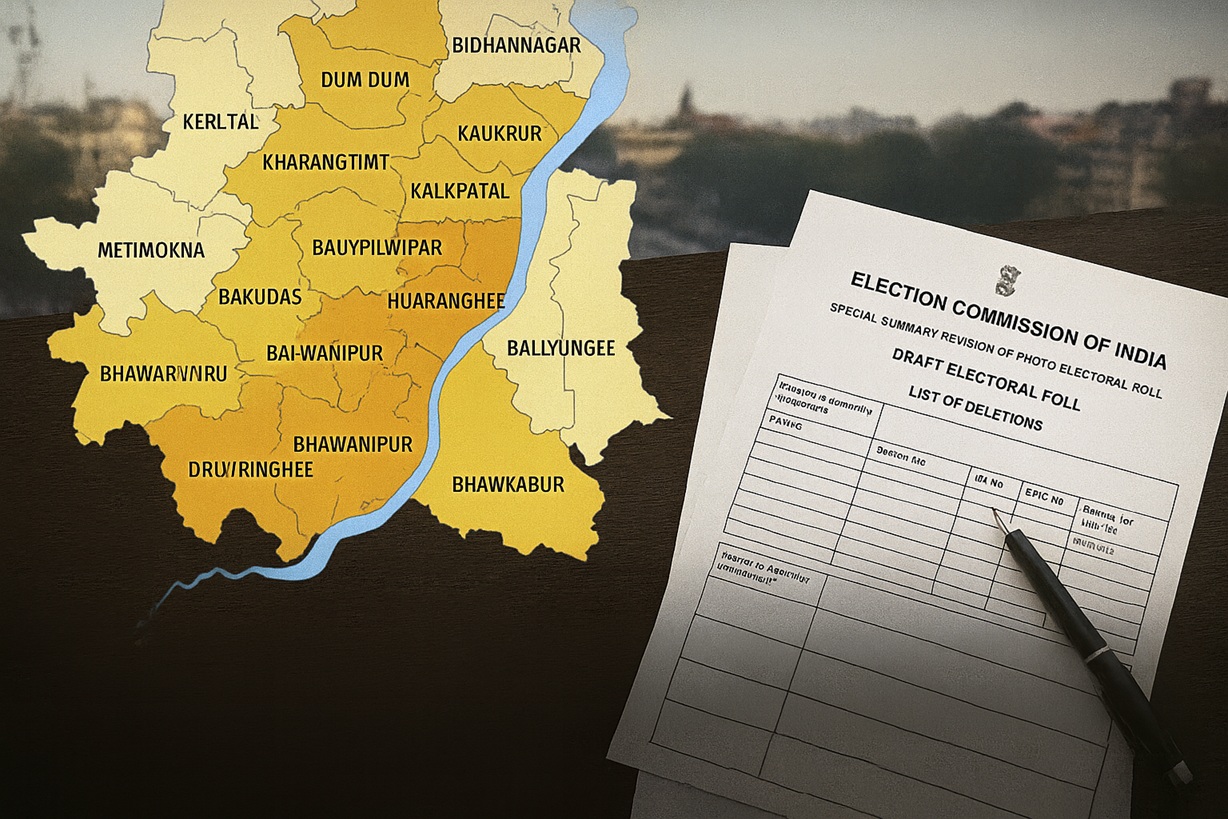
The Great Barrier Reef stands as one of the most remarkable natural wonders of the world. Located off the coast of Queensland, Australia, it is famous for its breathtaking beauty and ecological significance. Spanning over 2,300 kilometers (1,400 miles) along the northeastern coast of Australia, the Great Barrier Reef is the largest coral reef system on Earth. The reef, visible from space due to its vast size, comprises nearly 3,000 individual reefs. A significant portion of the Great Barrier Reef is designated as a marine protected area, overseen by the Great Barrier Reef Marine Park Authority of Australia. Although the discovery of the Reef occurred only 250 years ago around 1770 by Captain James Cook, it is believed to be approximately 500,000 years old. In this article, we examine the Great Barrier Reef’s ecological importance, biodiversity, threats, conservation, and scientific research. We cover its formation, indigenous ties, tourism, sustainability, coral bleaching impact, restoration efforts, technological innovations, and Indigenous Culture about its beginnings.
Situated in the Coral Sea, the Great Barrier Reef has a complex marine ecosystem composed of thousands of individual reefs and islands. Its geographic extent stretches from the Torres Strait in the north to Fraser Island in the south, covering an area of approximately 344,400 square kilometers. It has the planet’s most extensive array of coral reefs, hosting 400 varieties of coral and 4,000 mollusc species. This remarkable reef is habitat to numerous species, including 6 turtle species, 215 bird species, 17 sea snake species, and over 1,500 fish species. The Great Barrier Reef surpasses the combined size of Tasmania and Victoria. In fact, it spans an area equivalent to 70 million football fields. The reef’s diverse habitats include coral gardens, seagrass meadows, and mangrove forests, supporting an extraordinary array of marine life.

The Great Barrier Reef began forming millions of years ago, as coral polyps (which are invertebrates) gradually built upon the remains of their predecessors. Over time, layers of calcium carbonate secreted by coral colonies formed the intricate structures that define the reef today. (Corals produce layers of calcium carbonate beneath their bodies, forming an exoskeleton). This structure provides a base for baby corals to settle on and grow further. Geological processes, including tectonic activity and sea level fluctuations, have shaped the reef’s evolution, creating a mosaic of habitats and ecosystems.
The Great Barrier Reef is famous for its matchless biodiversity, harboring thousands of species of fish, corals, molluscs, and marine mammals. Its coral reefs provide critical habitat for a diverse array of marine life, including iconic species such as the clownfish, reef sharks, and giant clams. The reef’s ecological importance extends beyond its borders, supporting global marine biodiversity and ecosystem health.
In recognition of its outstanding universal value, the Great Barrier Reef was inscribed as a UNESCO World Heritage site in 1981 as 7 natural wonders of the world. The World Heritage Committee inscribed the Reef due to its “Outstanding Universal Value.” The reef meets several criteria for World Heritage status, including its exceptional natural beauty, ecological diversity, and scientific significance. The designation underscores the reef’s importance as a globally significant marine ecosystem and highlights the need for its protection and preservation.

The Great Barrier Reef faces numerous threats, including climate change, pollution, overfishing, and coastal development. These human-induced pressures endanger the reef’s delicate ecosystems and imperil the survival of countless marine species. Conservation efforts are underway to mitigate these threats and safeguard the reef for future generations. Marine protected areas, sustainable fishing practices, and coral reef restoration projects are among the strategies employed to ensure the long-term health and resilience of the reef.
Coral Species and Symbiotic Relationships
Coral reefs are home to a vast array of coral species, each with its own unique characteristics and adaptations. Corals form symbiotic relationships with tiny algae called zooxanthellae, which live within their tissues and provide them with energy through photosynthesis. This symbiotic relationship is crucial for the growth and survival of coral reefs.

The biodiversity of coral reef ecosystems is astonishingly high, rivaling that of tropical rainforests. They support an incredibly diverse array of marine life, including fish, invertebrates, and microorganisms. Coral reefs also provide a variety of habitats, including coral colonies, seagrass beds, and mangrove forests, each supporting its own unique assemblage of species.
Tourism and Sustainability
Tourism plays a significant role in the economy of many coastal regions around the world, including those with coral reef ecosystems. However, balancing the economic benefits of tourism with the need for environmental sustainability is crucial for the long-term health of coral reefs and the communities that rely on them.
Economic Importance of Tourism
Tourism contributes significantly to local economies in coastal regions with coral reefs. Revenue generated from tourism activities, including accommodations, dining, transportation, and recreational services, injects vital funds into local communities. This income supports small businesses, creates job opportunities, and stimulates economic growth in areas that may otherwise lack diverse sources of income.

Contribution to Local Economies
The tourism industry provides a substantial boost to the economies of coastal communities, particularly in developing countries where coral reefs are major tourist attractions. Revenue generated from tourism helps fund infrastructure development, public services, and conservation efforts, contributing to overall socio-economic development.
Employment Opportunities and Revenue Generation
Tourism creates employment opportunities for local residents across various sectors, including hospitality, transportation, guiding, and retail. Jobs in the tourism industry offer income stability and career advancement prospects for individuals living in coastal areas. Additionally, tourism-related businesses generate revenue through the sale of goods and services, further stimulating economic activity and supporting local livelihoods.

Sustainable Tourism Practices
Promoting sustainable tourism practices is essential for minimizing the negative impacts of tourism on coral reef ecosystems and ensuring their long-term viability as tourist destinations.
Eco-Friendly Tour Operators and Accommodations
Eco-friendly tour operators and accommodations prioritize environmental conservation and minimize their ecological footprint. They adopt sustainable practices such as waste reduction, energy efficiency, and water conservation to mitigate their impact on coral reefs and marine environments. Eco-friendly tour operators also educate visitors about the importance of reef conservation and promote responsible behavior during reef excursions and activities.
Marine Park Regulations and Visitor Management Strategies
Marine Park regulations and visitor management strategies help regulate tourist activities and minimize disturbances to coral reef ecosystems. These regulations may include zoning systems, visitor quotas, and designated anchorages to prevent damage to sensitive reef habitats. Visitor management strategies also promote environmental education and awareness among tourists, empowering them to make informed decisions and participate in conservation efforts during their visits.
By promoting sustainable tourism practices and implementing effective management strategies, it can strike a balance between the economic benefits of tourism and the conservation of coral reef ecosystems. Sustainable tourism not only supports local economies and livelihoods but also ensures that future generations can continue to enjoy and appreciate the natural beauty and biodiversity of coral reefs around the world.
Indigenous Culture and Heritage
Although Indigenous Australians and Torres Strait Island people had long recognized the existence of the Great Barrier Reef, it was Captain James Cook who is credited with its discovery. In 1770, the British explorer encountered the Reef when his ship ran aground on it. During his expeditions, James Cook charted vast stretches of previously unexplored coastlines, including the eastern coast of Australia, where he encountered the Great Barrier Reef. His thorough mapping and detailed observations revolutionized the understanding of geography and map reading, laying the groundwork for future exploration and colonization efforts. In 1768, French explorer Louis De Bougainville nearly stumbled upon the Great Barrier Reef. However, he encountered a reef just east of it during his voyage from South America.

Cook’s voyages also contributed to scientific knowledge, as he conducted extensive research in areas such as astronomy, botany, and ethnography. His encounters with indigenous peoples provided valuable insights into their cultures, customs, and languages, fostering cross-cultural exchanges, and understanding. Despite his achievements, Cook’s expeditions were not without controversy, as they often brought him into conflict with indigenous populations and rival colonial powers.
Indigenous peoples around the world have deep connections to coral reef ecosystems, shaped by centuries of cultural practices, traditions, and spiritual beliefs. Their intimate relationship with the reef is grounded in traditional knowledge and a profound sense of stewardship for these natural wonders.
The Great Barrier Reef has some fascinating legends about how it started. One of these stories comes from the Yindinji people, an Aboriginal Australian group from Far North Queensland.
The legend goes like this: Two brothers went fishing and were told not to harm a special fish. Sadly, one brother disobeyed and killed the sacred fish. This made the natural elements angry. As a result, lava fell from the sky into the water. This caused the ocean levels to rise, wiping out everything and forming the Great Barrier Reef.
Indigenous Connections to the Reef

Indigenous communities have rich oral traditions and storytelling practices that pass down knowledge and wisdom about the reef from generation to generation. Through storytelling, songs, and dance, indigenous elders share insights about the ecological significance of the reef, its biodiversity, and the intricate relationships between marine species. Traditional knowledge encompasses a deep understanding of seasonal cycles, weather patterns, and marine life behaviors, which guide indigenous practices and resource management strategies.
The reef holds spiritual significance for indigenous peoples, with many communities viewing coral reefs as sacred sites filled with cultural significance and ancestral spirits. Spiritual ceremonies, rituals, and offerings are conducted to honour the reef and seek its protection, nurturing a sense of worship and exchange between humans and nature.
Indigenous Conservation Efforts

Indigenous communities are at the forefront of coral reef conservation efforts, their traditional knowledge and cultural values to inform sustainable management practices and environmental stewardship initiatives.
- Community-led initiatives empower indigenous peoples to actively participate in the management and protection of their ancestral lands and waters. Indigenous stewardship programs promote indigenous governance models, decision-making processes, and traditional resource management practices, which prioritize ecological integrity and community well-being.
- Collaboration between indigenous communities, government agencies, and non-governmental organizations (NGOs) is essential for effective coral reef conservation. Partnerships facilitate knowledge exchange, capacity building, and co-management arrangements that respect indigenous rights and support community-led conservation initiatives. By nurturing collaborative relationships based on mutual respect and shared goals, indigenous conservation efforts can enhance the resilience of coral reef ecosystems and promote cultural diversity and social justice.
- Indigenous culture and heritage are integral to the conservation and management of coral reef ecosystems. By recognizing and respecting indigenous connections to the reef, government can foster inclusive approaches to conservation that honour traditional knowledge, cultural diversity, and the connection of humanity and nature. Through meaningful engagement and partnership with indigenous communities, they can work together to safeguard coral reefs for future generations and uphold the cultural heritage and spiritual significance of these precious marine ecosystems.
Threats to Biodiversity

Coastal development, pollution, and global warming have all contributed to harming the Reef, resulting in the loss of 50% of coral since 1995. Coral bleaching poses one of the greatest threats to the Reef’s future. It occurs when corals undergo stress due to changes in conditions such as water temperature, light, and nutrients. Corals have a symbiotic relationship with algae, which sustains their health and vitality. When corals experience stress, they expel these algae, causing them to turn white or bleach. Bleached corals are more vulnerable to diseases and mortality.
The primary causes of coral bleaching are attributed to rising ocean temperatures driven by climate change, along with pollution and excessive exposure to light. Despite their ecological importance, coral reef ecosystems face numerous threats that endanger their biodiversity and long-term survival and face several other significant threats:
- Pollution: Pollution from agricultural runoff, sewage discharge, oil spills, and coastal development can introduce harmful chemicals, nutrients, and sediments into coral reef ecosystems. This pollution can disrupt the delicate balance of reef ecosystems, leading to coral stress, disease outbreaks, and reduced water quality.
- Overfishing and Destructive Fishing Practices: Overfishing and destructive fishing practices, such as blast fishing, cyanide fishing, and bottom trawling, can directly damage coral reefs and deplete fish populations. Removing key herbivores and predators can disrupt ecological balance, leading to algal overgrowth and coral reef degradation.
- Invasive Species: Invasive species, introduced either intentionally or unintentionally, can pose significant threats to coral reef ecosystems. Invasive species can outcompete native species for resources, predate on corals and other reef organisms, and alter ecosystem dynamics, leading to declines in biodiversity and ecosystem function.
- Coastal Development and Habitat Destruction: Coastal development, including dredging, land reclamation, and construction of coastal infrastructure, can lead to habitat destruction and fragmentation of coral reef ecosystems. Alterations to natural coastal processes can disrupt sediment transport, increase erosion, and reduce water quality, further compromising the health and resilience of coral reefs.
- Tourism Pressure: Uncontrolled tourism and recreational activities can exert significant pressure on coral reef ecosystems. Activities such as anchoring, snorkeling, diving, and boat traffic can directly damage coral reefs and disturb marine life. Unsustainable tourism practices, such as trampling on corals and collecting marine specimens, can degrade reef habitats and disrupt ecosystem functioning.
- Ocean Acidification: Ocean acidification, resulting from increased carbon dioxide levels in the atmosphere, can inhibit the growth and calcification of corals and other reef-building organisms. As ocean pH levels decrease, corals may struggle to maintain their calcium carbonate skeletons, making them more susceptible to erosion and physical damage.
- Global Trade and Aquarium Industry: The global trade in reef species for the aquarium industry can contribute to overexploitation of coral reef resources and habitat destruction. Collection of live coral, fish, and invertebrates for the aquarium trade can deplete populations, disrupt ecosystems, and threaten species survival.
- Coral Bleaching: Coral bleaching occurs when corals expel the algae living within their tissues, causing them to turn white or pale. This phenomenon is primarily caused by environmental stressors such as high-water temperatures, pollution, and nutrient runoff. Bleached corals are more susceptible to disease and are less resilient to other stressors, posing a significant threat to reef health.
- Impact of Climate Change and Ocean Acidification: Climate change poses one of the most significant threats to coral reef ecosystems. Rising sea temperatures can lead to mass coral bleaching events, causing widespread damage to reefs around the world. Ocean acidification, a result of increased carbon dioxide levels in the atmosphere, can also inhibit coral growth and weaken reef structures. These combined effects make coral reefs more vulnerable to other stressors, exacerbating their decline and compromising their ability to support marine biodiversity.
Addressing these multifaceted threats requires concerted efforts at local, national, and international levels. Implementing effective marine protected areas, regulating fishing practices, reducing pollution and runoff, promoting sustainable tourism, and raising public awareness are critical steps towards safeguarding coral reef ecosystems for future generations.

Coral Reef Restoration Initiative (CRRI):
- It involves collaboration between scientists, policymakers, and local communities to implement effective restoration strategies and monitor reef health over time.
- Initiated by a consortium of international marine conservation organizations and research institutions.
- The CRRI focuses on restoring degraded coral reef ecosystems through coral propagation, transplantation, and habitat rehabilitation.
Resilient Reefs Project:
- Launched by a coalition of environmental NGOs, government agencies, and academic institutions.
- The Resilient Reefs Project aims to enhance the resilience of coral reef ecosystems to climate change and other stressors.
- Activities include research on coral genetics, ecosystem modeling, and community engagement to develop adaptive management strategies for reef conservation.
Coral Conservation and Rehabilitation Program (CCRP):
- Established by a government agency or environmental organization with a focus on coral reef conservation.
- The CCRP implements coral reef rehabilitation projects, including coral nurseries, artificial reef deployments, and marine protected area establishment.
- It also conducts outreach and education programs to raise awareness about the importance of coral reefs and promote sustainable reef management practices.
Reef Resilience Network (RRN):
- Founded by an international coalition of marine conservation organizations and academic institutions.
- The RRN provides training, tools, and resources to coral reef managers and practitioners worldwide.
- It facilitates knowledge exchange and capacity building to enhance the resilience of coral reef ecosystems and support effective reef management and conservation.
Sustainable Coral Restoration Project (SCRP):
- Launched by a local or regional conservation group with support from government agencies and international partners.
- The SCRP focuses on implementing sustainable coral restoration techniques, including coral gardening, larval propagation, and community-based monitoring.
- It aims to build local capacity for coral reef conservation and empower coastal communities to become stewards of their marine resources.
Coral Adaptation and Restoration Effort (CARE):
- Initiated by a research institution or government agency specializing in coral reef science and conservation.
- CARE aims to develop and deploy innovative approaches to coral adaptation and restoration, such as assisted evolution techniques and genomic studies.
- It seeks to enhance the resilience of coral reefs to climate change and other threats by harnessing advances in scientific understanding and technology.
Reef Recovery Project:
- Implemented by a local community organization, government agency, or NGO in response to acute coral reef degradation events.
- The Reef Recovery Project focuses on rapid response and recovery efforts following coral bleaching events, storms, or other natural disasters.
- It involves coral reef monitoring, emergency interventions, and long-term monitoring to assess reef recovery trajectories and inform adaptive management strategies.

Coral Reef Resilience Alliance (CRRA):
- Formed through a collaborative partnership between government agencies, NGOs, and academic institutions.
- The CRRA works to enhance the resilience of coral reef ecosystems through coordinated research, capacity building, and policy advocacy.
- It supports on-the-ground conservation efforts and fosters collaboration between stakeholders to address common challenges and leverage resources for coral reef protection.
Ocean Restoration and Resilience Initiative (ORRI):
- Led by a global coalition of marine conservation organizations, philanthropic foundations, and government agencies.
- ORRI focuses on restoring and enhancing the resilience of ocean ecosystems, including coral reefs, seagrass meadows, and mangrove forests.
- It promotes integrated approaches to marine conservation and sustainable development, emphasizing the importance of ecosystem-based management and stakeholder engagement.
Blue Reef Restoration Project (BRRP):
- Sponsored by a corporate entity, philanthropic foundation, or government agency with a focus on marine conservation and corporate social responsibility.
- The BRRP supports coral reef restoration and conservation initiatives in partnership with local communities and conservation organizations.
- It may involve funding for research, capacity building, and community-based conservation projects aimed at protecting and restoring coral reef ecosystems.
Reef Restoration Efforts at Fitzroy Island
- Various initiatives are underway to restore coral reefs, including a program supported by our team on Fitzroy Island.
- Fitzroy Island hosts offshore coral nurseries dedicated to the cultivation and development of new corals. These corals originate from small samples collected from healthy reef sections. Within the nurseries, corals experience accelerated growth rates compared to those on the Reef.
- Every 6 to 12 months, cuttings are carefully harvested from the growing corals in the nurseries and transplanted back onto the Reef.
Scientific Research and Innovation
- Marine science exploration encompasses the efforts of research institutions and field studies aimed at understanding coral reef ecosystems and marine biodiversity. Scientists conduct extensive research to investigate various aspects of coral reefs, including their ecology, physiology, and interactions with other marine organisms. Through field studies and expeditions, researchers gather valuable data and insights into the dynamics of coral reef ecosystems, contributing to scientific discoveries and breakthroughs in marine science.
- Technological innovations play a crucial role in advancing understanding and management of coral reef ecosystems. Remote sensing and monitoring technologies enable scientists to collect data on coral reef health, water quality, and environmental parameters from remote locations. These tools facilitate real-time monitoring and assessment of coral reef ecosystems, allowing researchers to detect changes and identify potential threats promptly. Coral reef mapping technologies utilize high-resolution imaging and sonar systems to create detailed maps and 3D models of coral reef habitats, aiding in conservation planning and management efforts. Additionally, underwater robotics enable scientists to explore and study coral reefs in inaccessible or hazardous environments, providing valuable insights into their biodiversity and ecological dynamics.
- Through scientific research and technological innovation enhance understanding of coral reef ecosystems and develop effective conservation strategies to protect and preserve these invaluable marine habitats for future generations.
The Great Barrier Reef is not only a natural wonder but also a symbol of our planet’s rich biodiversity and ecological complexity. Its sheer beauty and ecological significance inspire awe and wonder in millions of people around the world. As agents of this precious marine ecosystem, it is our collective responsibility to protect and preserve the Great Barrier Reef for generations to come. Through concerted conservation efforts and sustainable management practices, we can ensure that this iconic natural treasure continues to flourish for centuries to come.








